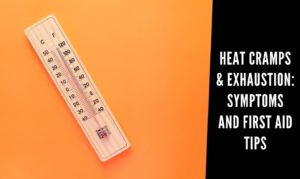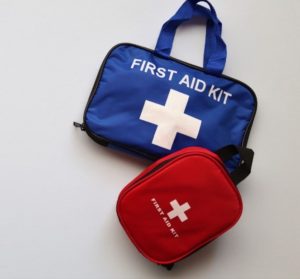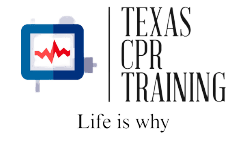Heat Cramps, Heat Exhaustion & Heat Stroke : Symptoms And First Aid Tips
Summer season is in full swing, and with it come several health risks. Things can even turn lethal if not taken proper precautions or received first aid when experiencing issues like heat stroke, heat cramps, heat exhaustion, etc. In fact, between 2004 and 2018, an average of 702 deaths occurred annually in the U.S alone due to heat-related conditions.
Anyone can experience heat-related issues, but they’re most common in people who work or exercise in hot environments or are exposed to the sun for long periods daily. If you’re experiencing heat-related issues, it’s important to know the symptoms and what to do if you find yourself in a sticky situation. This guide will talk about heat-related conditions, their symptoms, and tips on what to do if you experience any other heat-related illnesses. So, let’s dive right in:

4 Common Heat-Related Health Condition Types
#1: Heat Stroke
Heat stroke is a serious heat-related health condition that can quickly lead to death. It happens when the body no longer has control of its temperature, which rapidly rises, and the sweating mechanism fails as well, so the body can’t cool itself. The temperature can rise to 106F or higher in 10 to 15 minutes.
Heat Stroke Symptoms:
- Headache
- Confusion
- Seizures
- Rapid breathing and/or racing heart
- High body temperature (Above 100F)
- Loss of consciousness
Heat Stroke Prevention and Treatment:
- Drink plenty of fluids
- Avoid getting sunburns
- Never stay in a parked car that’s directly under the sun or leave anyone there
- Wear loose clothing
- Avoid physically working hard during the hottest hours of the day
#2: Heat Exhaustion:
Heat exhaustion occurs when the body generates too much sweat to cool down but, as a result, loses excessive salt and water (exhausting its mineral and water reserves). This condition most likely affects people with high blood pressure and the elderly.
Symptoms of Heat Exhaustion:
- Overwhelming thirst
- Fatigue
- Dizziness and confusion
- Appetite loss
- Headache
- Nausea
- Clammy and pale skin
Heat Exhaustion Prevention and Treatment:
- To treat exhaustion, you need rest (both mentally and physically),
- Rehydration with fluids and salts
- Fan use if possible (take handheld rechargeable fans out with you)
- Cool showers or baths
#3: Heat Cramps
Heat Cramps Symptoms:
- Involuntary jerking muscle movements
- Fever
- Flushed, moist skin
- Incredibly painful muscle spasms
- Heavy sweating
Heat Cramps Prevention & Treatment:
- Stay hydrated at all times
- Drink lots of fluids before, after, and during heavy activity
- Take electrolyte-rich foods, especially before going out in the sun or exercising
- Stop the exercise when experiencing heat cramps and love to a cold location to rest
- Remove any heavy clothes and stay in the prone position
- Place a cold compress on the neck, face, or chest
#4: Heat Rash
Heat rash, aka miliaria or prickly, is a health condition that can be caused by excessive exposure to the sun or hot temperatures. Heat rash typically occurs when the sweat is trapped under the skin. Remember, it’s not limited to babies; adults can experience it too.
Heat Rash Symptoms:
- Small blisters
- Deep inflamed lumps
- Prickling or itching in the affected area
- Painful, inflamed bumps with itchiness; may break open
Heat Rash Prevention and Treatment
- Dress in light and loose clothing in hot weather
- Avoid pore-blocking ointments and creams
- Ensure your sleeping area is ventilated and cool
- Limit physical activity in hot weather and stay in shades
- OTC antihistamines can relieve itching
- Calamine lotions can treat rashes
First Aid Tips for Heat-Related Issues
If you or someone nearby, maybe a coworker, exercise partner at the gym, a family member, or a random stranger, is suffering from a heat-related illness, there are a few things that you can do to ease the symptoms and improve the chances of recovering.

- Take the person affected with heat issues to a cooler area with shade and/or air conditioning.
- Create an ice bath by putting all available ice into a large tub or container with water. Now immerse the affected person into the ice-cold water. This is a standard practice in sports and the best method to cool someone having heat issues quickly in events of emergency, as stated by OSHA
- Make sure to remove any heavy clothing they have before making them lie down in the cold bathtub. Ensure their head and neck are above the water levels.
- Place cold, wet towels or ice on their head, groin, and armpits.
- Put them directly under a fan to circulate cool air around the affected.
- Do not leave the ill person alone, as the symptoms can quickly worsen.
If you’re in doubt or not sure whether the person is getting better, call 911.
Should You Take First Aid Training for Heat-Related Illnesses?
Yes, anyone who deals with people exposed to high heat or long hours under the sun should take First Aid training to deal with heat-related issues.
These include construction workers/supervisors, gym trainers/managers, school nurses (because children are more vulnerable to heat illnesses), nursing home staff, sports trainers, and so on.
Texas CPR Training at www.texascpr.com offers a range of first aid training programs to help people understand what to do in case of emergencies and save the lives of people and their own.
Parting Words:
As you can see, it’s essential to be aware of the symptoms and first aid tips for heat-related illnesses. The earlier these symptoms are detected and treated, the better.
So, take care of yourself by taking first aid training on how to manage common heat conditions and what to do in case of emergency.
